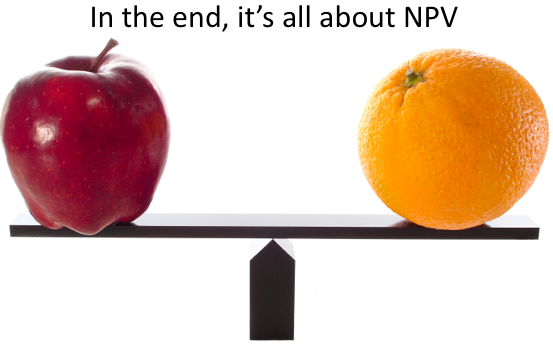On 9 March 2010, I gave a talk on Enterprise Scrum at the 2010 US Scrum Gathering in Orlando, Florida. I am grateful that about 50 people showed up for my talk, from about 300 total Scrum Gathering attendees. People were intrigued by fractal thinking, by the blunt assertion that engineering teams rapidly burn money, and by the prioritization of work using forecasted Net Present Value. Enterprise Scrum can create very healthy product lines and companies. In a sense, Enterprise Scrum turns enterprises into internal venture capital funders.
Despite that large Scrum implementations can dramatically increase the productivity of 250 to 30,000 developers, the exotic world of agile methods confuses or scares most large company executives, if they even know of agile methods at all. It’s too bad, because deploying Enterprise Scrum or other “large Scrum” variants could likely save a few dinosaurs from extinction.
I love sharing these ideas with others. My personal mission is to help society produce more value (happiness, etc.) with less work, for everyone. I would be happy to present Enterprise Scrum to your organization or executive team, if it resonates.
Here is the background information on the talk.
Speaker Biography

Dr Dan Greening is Citrix Online’s Director of the Agile Program Office. This team provides Program Management, ScrumMastering, User Experience Testing and User Interface Design services to the company. He was the primary evangelist in converting Citrix Online to be a pure Scrum organization, and advocates for Lean, Theory of Constraints, and other continuous improvement frameworks. His paper on Enterprise Scrum was nominated for best paper in the 2010 Hawaii International Conference on System Science.
Greening is co-founder of three previous startup companies, two of which realized moderate liquidity.
He was Principal Investigator on 3 National Science Foundation SBIR awards.
He holds Ph.D. and Masters degrees in Computer Science from UCLA, and a Bachelors in Computer Engineering from University of Michigan. He is a Certified Scrum Professional. He published a paper on stochastic optimization and fractals in the proceedings of Santa Fe Institute’s Complex Systems Summer School.
He has studied the emergent properties of large organizations for decades. In 1986, while a computer science graduate student, Greening was elected President of the University of California Student Association, representing 144,000 students at 9 campuses. Under his leadership, UCSA created self-organized teams that successfully championed state legislation for improved student health care, student safety, and financial accountability in the University.
Abstract
Enterprise Scrum is “Scrum Writ Large,” a continuous improvement process modeled after Scrum, but scaled, using fractal thinking, to a much larger organization. It is not Scrum-of-Scrums. It was developed in late 2008 at Citrix Online, and has been iteratively improved since then.
Enterprise Scrum, as implemented in Citrix Online, has quarterly sprint cycles, weekly standup meetings, effort measured in “estimated team months,” and prioritization partly based on Net Present Value. Planning is iterative, to avoid squandering developer time estimating effort until the last possible moment. Several resource allocation strategies have been explored, everything from total self-organization to traditional approaches. Through a series of retrospectives and adaptation, a hybrid is emerging.
Evidence for Enterprise
Scrum’s success is anecdotal, but strong: Executives know and plan against the engineering department velocity, remove high-level productivity impediments, and promote agile in their own departments. Because the value of key engineering projects, including technical-debt reduction, is understood and prioritized at the CXO level, not hidden in the priesthood of the Engineering Department, there is a healthy appreciation of the value engineers provide. We have seen situations where other departments voluntarily redirected funds to engineering, because engineering could prove its high profitability.
Topic
Scrum practitioners regularly face problems gaining advocates at the top levels of medium to large organizations. In part this results from Scrum’s focus on individual teams and small features, while large organizations assess and prioritize major projects largely around profitability, mission synergy and cost.
To successfully promote agile and continuous improvement processes at the executive level, we must understand corporate values, incorporate them in our processes, and explain process utility in ways that executives understand. We must provide executives with tools that let them easily prioritize projects and, once they have started, identify systemic and project-level blockers that impede progress.
This talk will likely help agile practitioners working within large organizations, and help people considering investing in or initiating startup companies. The concepts are similar for both. If you have a large organization, and you are competing with startups, you may need an approach like Enterprise Scrum to remain viable.
Objectives
- how to easily drive agile understanding into the whole organization.
- how to apply fractal thinking to Scrum and other continuous improvement techniques.
- how to reduce apples and oranges comparisons (such as comparing a feature project against a technical debt reduction project) to Net Present Value.





Leave a Reply
You must be logged in to post a comment.